The Snake plant, interestingly also known as mother-in-law's tongue, is a hardy plant with striking lines that have become a popular choice among indoor plant lovers. Initially classified as Sansevieria trifasciata, it now comes under the Dracaena species, due to the many commonalities it shares with the Dracaena.
These plants are easy to grow and do very well when neglected, making them a perfect choice for those with every coloured thumb, except for green! They are very nearly indestructible and can grow under bright indirect light or even dark corners, brightening up any shaded space.
Snake plants have stiff, sword-like leaves that can grow up to eight feet in height. They have dark green banded leaves, almost always with a yellow border, adding a touch of beauty to just about any space.
Tips for Keeping Your Snake Plant Healthy
Reasons to Consider | Low maintenance | Air | Adaptability | Propagate | Aesthetically PleasingSnake Plant Care | Soil | Water | Temperature | Pruning
Common Problems | Root Rot | Yellow leaves | Curling Leaves | Product Recommendations
Reasons to Consider Bringing a Snake Plant Home
- Low maintenance: Snake plants are very low-maintenance and can survive in a variety of conditions. They are almost indestructible and can go a long time without water, making them a good choice for people who wants easy, “independent” plants.
Click on the image to buy
- Air purification: These plants have been shown to be effective at removing toxins from the air, making them a great choice for improving the air quality in your home.
- Adaptability: They can grow well in a variety of lighting conditions, from low to bright indirect light. This makes them a good choice for a wide range of homes and offices.
- Easy to propagate: Snake plants are easy to propagate from cuttings, so you can easily increase your collection or share plants with friends and family.
- Aesthetically pleasing: Snake plants have long, thin leaves that are attractive and can add a touch of greenery to any room.
(back to top)
Caring for Your Snake Plant
Being almost indestructible, the care requirements for this plant are fairly simple. It does not demand much, except for the bare minimum:
Light: Although the Snake plant can grow in dark places, it will thrive if exposed to bright light with some sun. It will grow faster with sunlight, but it will also survive in shaded spots.
Click on the image to buy
Soil: This plant mostly prefers sandy soils. Choose a potting mix that is low in peat content and a planter with drainage hole, to make it easier to drain. This is because Snake plants are susceptible to root rot, and thus prefer well-draining loose soil.
Water: Over-watering can lead to root rot, which is why this plant grows well when mostly neglected. Water the plant only when the topsoil feels dry to the touch. During winters, reduce watering to once in two weeks or even once a month. Also, place it in a planter with a drainage hole to avoid any water logging.
Temperature: Snake plants hate the cold weather, so keep the plant away from vents or from air drafts. It grows well under warm conditions and is not a fan of quick temperature changes. They prefer dry environments and would not do very well under humid conditions.
Pruning: Use sharp pruning scissors to remove damaged leaves and encourage new growth. You can also control the height of the plant by taking off the tallest leaves. However, prune the plant only during the growing season to encourage new growth faster.
(back to top)
Common Problems with Snake Plants
As with any indoor plant, your Snake Plant could run into a few problems while growing.
Click on the image to buy
Root rot: If the soil starts to smell foul then you may have root rot. Over-watering leads to root rot, especially during the winter. Inspect the roots for any brown or mushy roots. If you do find mushy roots, cut them away and place the plant in a new planter with fresh soil.
Yellow or brown leaves: Yellow streaks on green leaves are normal and healthy. But if the entire leaf turns brown or yellow then it could be a sign of under-watering.
Curling leaves: Curling leaves could be a sign of a thrip infestation. Thrips are tiny black bugs that can be easily removed. Cut off the curled leaves and spray with a concoction of neem oil and water to keep all insects at bay.
The Snake plant is an easy-to-grow, low-maintenance plant, that can survive almost anything, and adds a touch of lush greenery to just about any space.
(back to top)
Recommendation for Your Snake Plant
Discover more planters for your Snake Plant

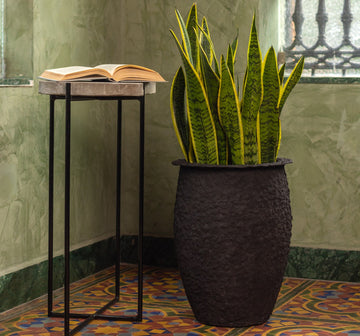



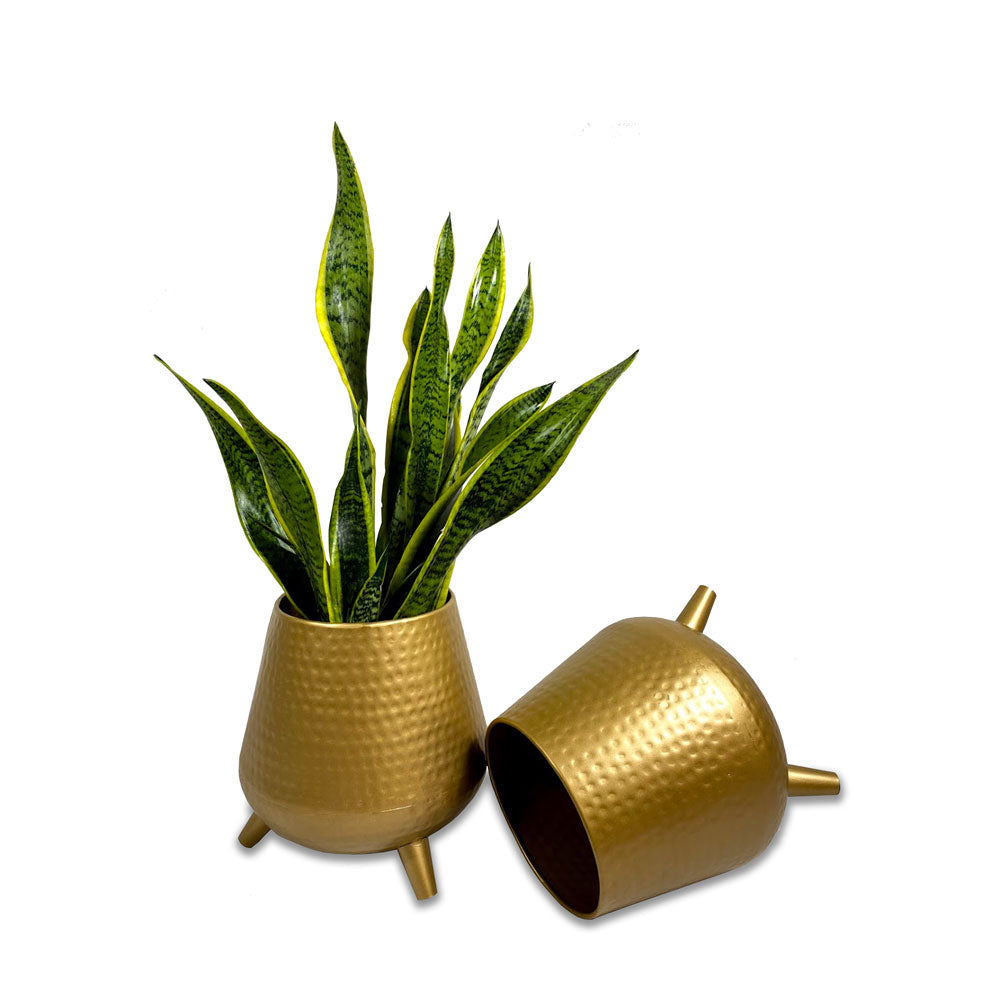
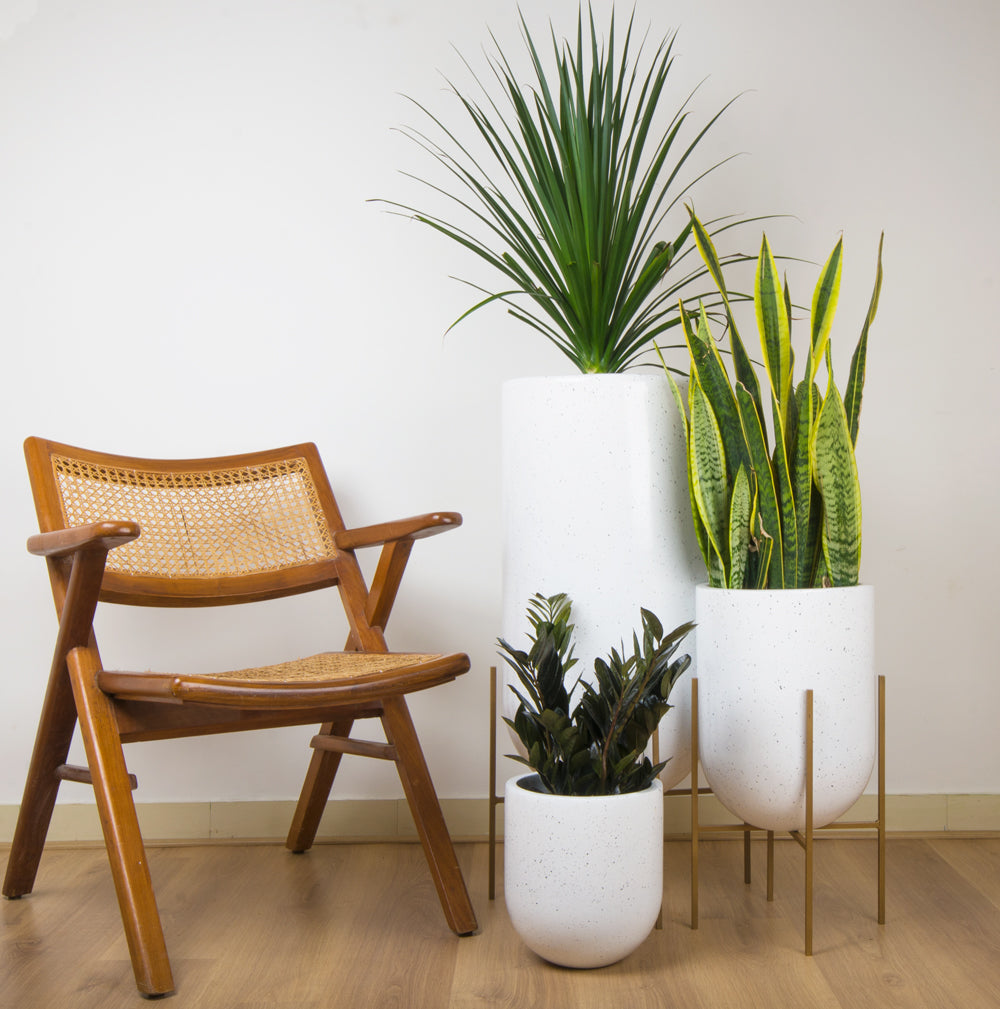
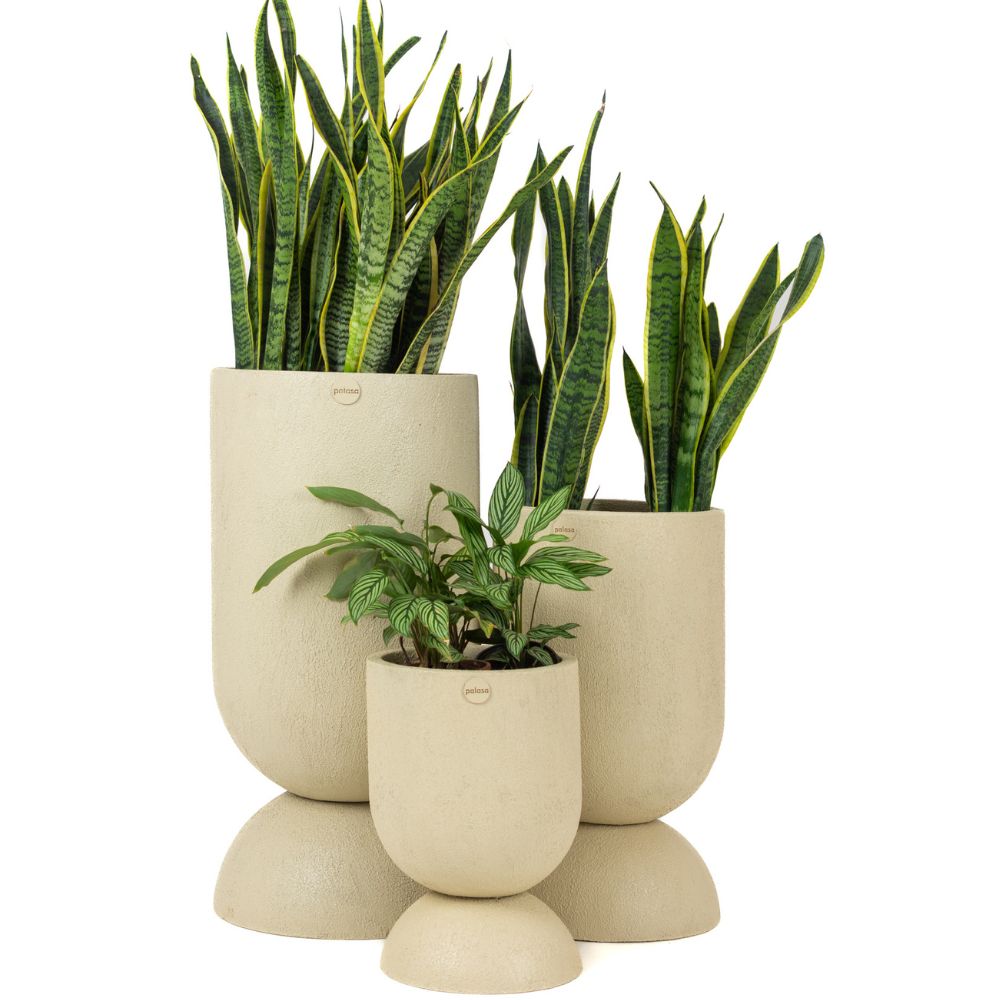
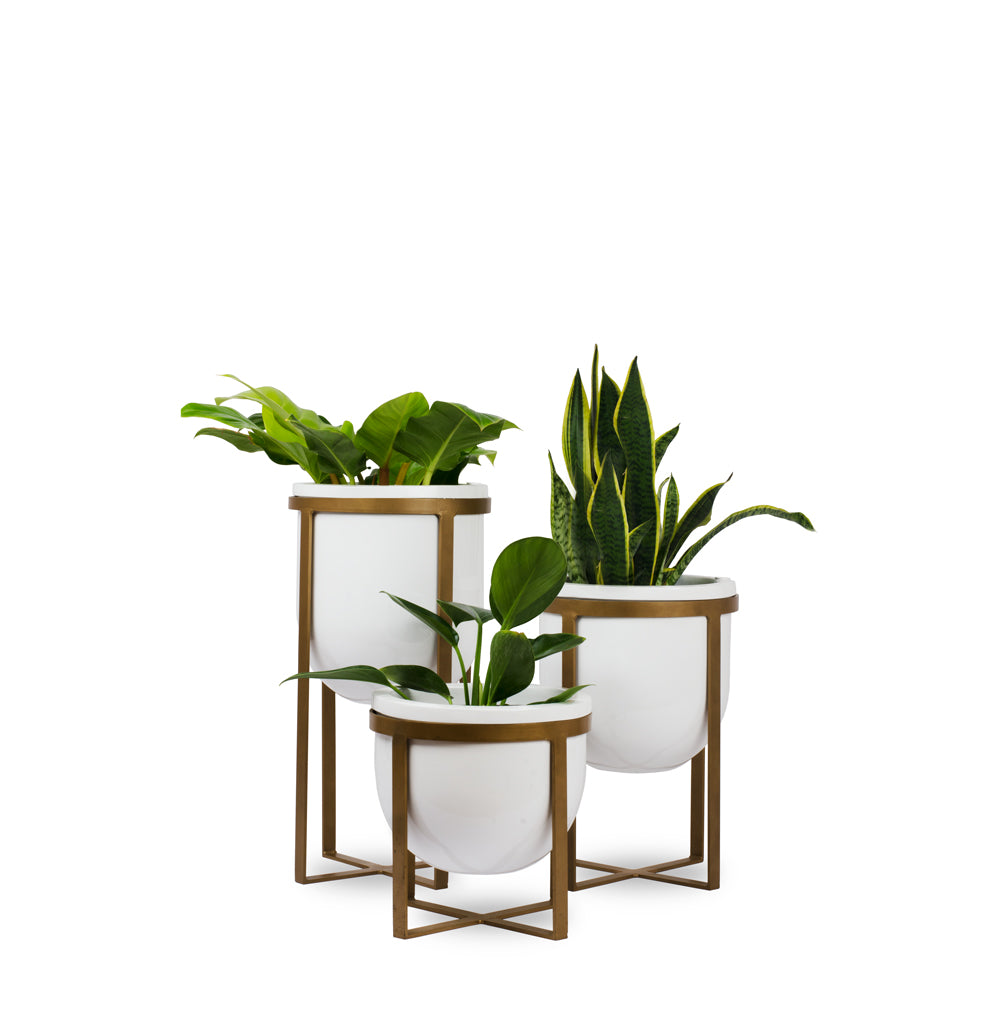




 At Palasa, we believe in the seamless fusion of nature, design and humanity.
At Palasa, we believe in the seamless fusion of nature, design and humanity.